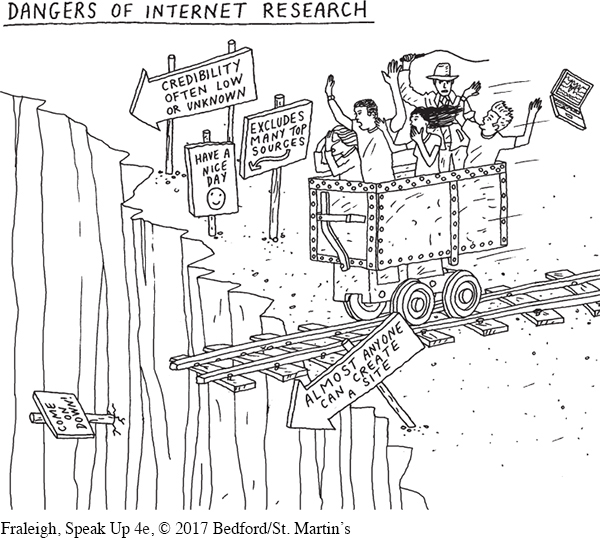Disadvantages of Internet Research
Despite the Web’s vastness, most of the world’s knowledge is still contained in printed works. Authorities in many fields publish their works primarily in books and scholarly journals. Many of these works are copyrighted, so they won’t likely be available on Web sites that a typical online search engine will lead you to. And if they are available, you may need to pay a fee to access them.
Moreover, you can’t assume that information you find online is credible, because most of it is not vetted in the same way that books and periodicals are. There are literally millions of Web sites created by individuals, advocacy groups, clubs, and businesses that may contain incorrect or biased information.16 As anyone with a Tumblr, Facebook page, or Twitter feed knows, it’s a snap for anyone to publish as much and as often as desired in the online world. Although expert review is essential in academic research, Internet information frequently is posted without any professional review.17
As a consequence, many of the Internet sources found by students do not have the quality that is expected by their instructors. Professor Wendy Lerner Lym of Austin Community College compares Internet research to fast food: sources can be quickly obtained, but they are not good for your academic health.18 Research has confirmed the low quality of many sources found on the Web. For example, a team headed by Professor Chuanfu Chen of Wuhan University, China, recently evaluated 2,814 Web pages found through keyword searches on Google, Yahoo!, and AltaVista on such topics as genetically modified foods. The researchers concluded that 11 percent of the Web sites were very weak and 45 percent were weak. Only 11 percent were rated as excellent or good.19 Research also has discovered inconsistencies in the quality of online information relating to healthy diets, health information for patients, and developmental disabilities.20
Page 208
Some students have been taught to evaluate the quality of a Web site by assessing the top-
Furthermore, a Web site’s name does not necessarily indicate its credibility. For example, a site such as TheTruth.com may look like it was created by research scientists with impeccable credentials, but it could have actually been created by public relations specialists funded by the tobacco industry; similarly, a professional, polished design offers no guarantee of a site’s credibility.
Page 209
